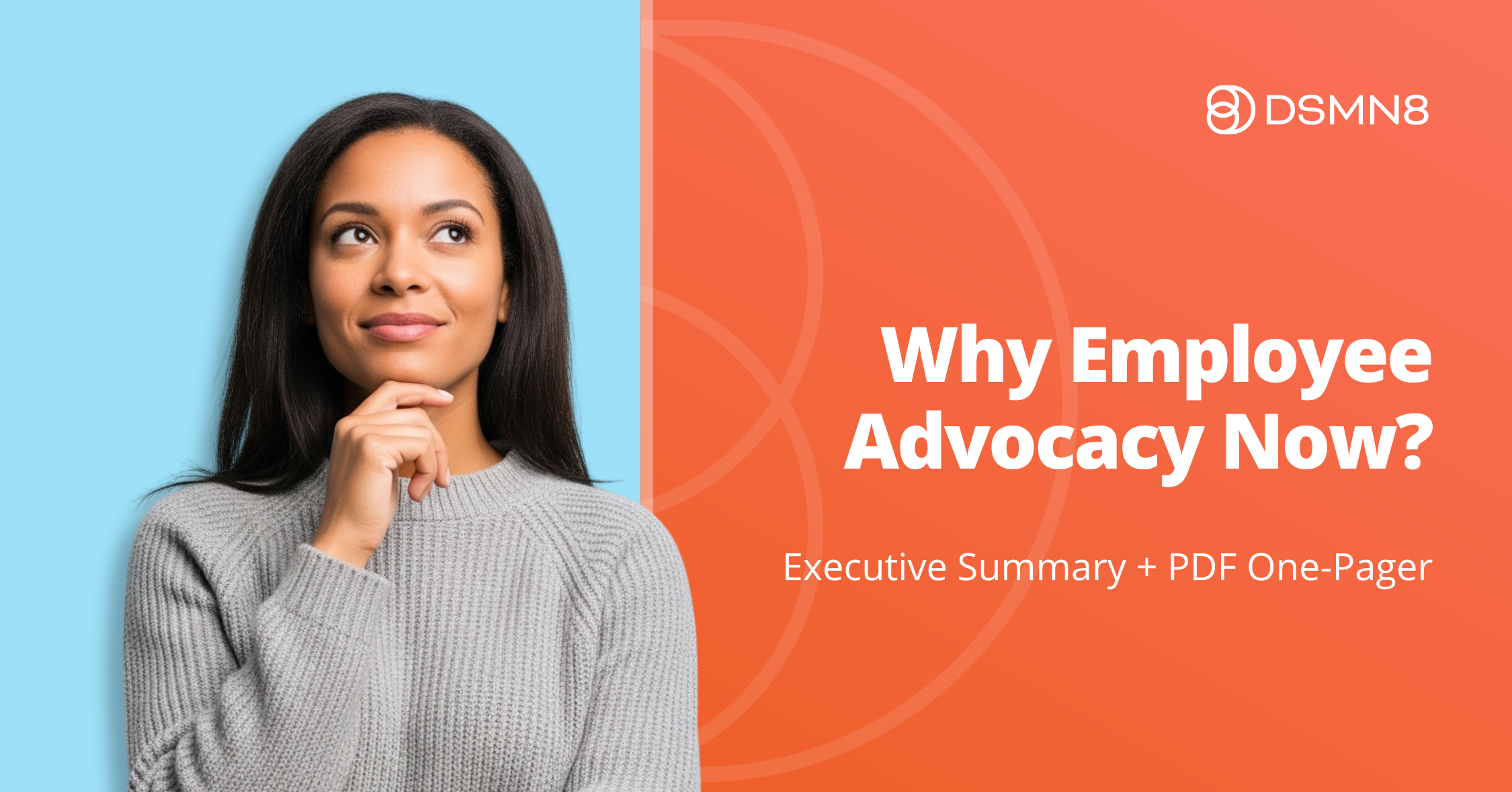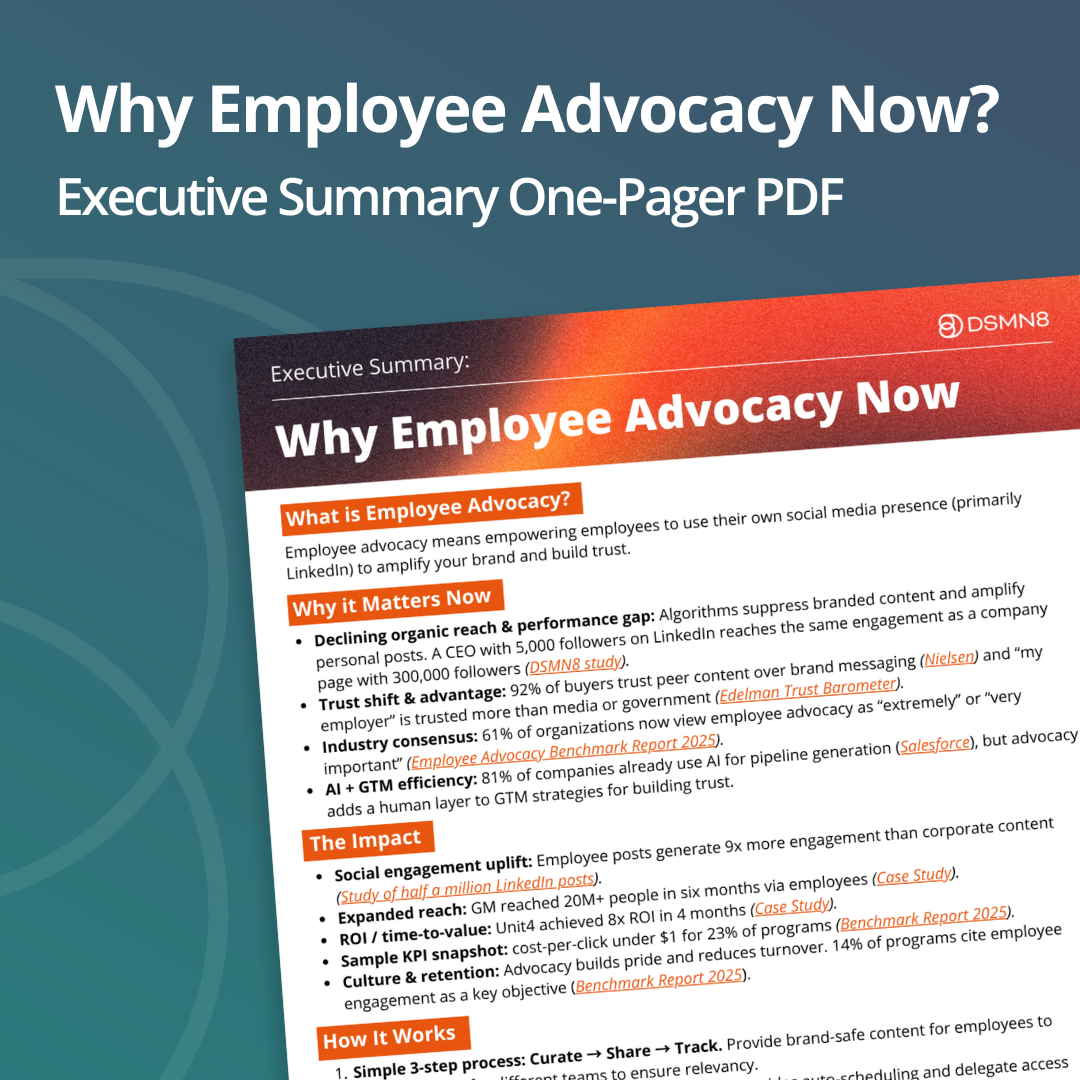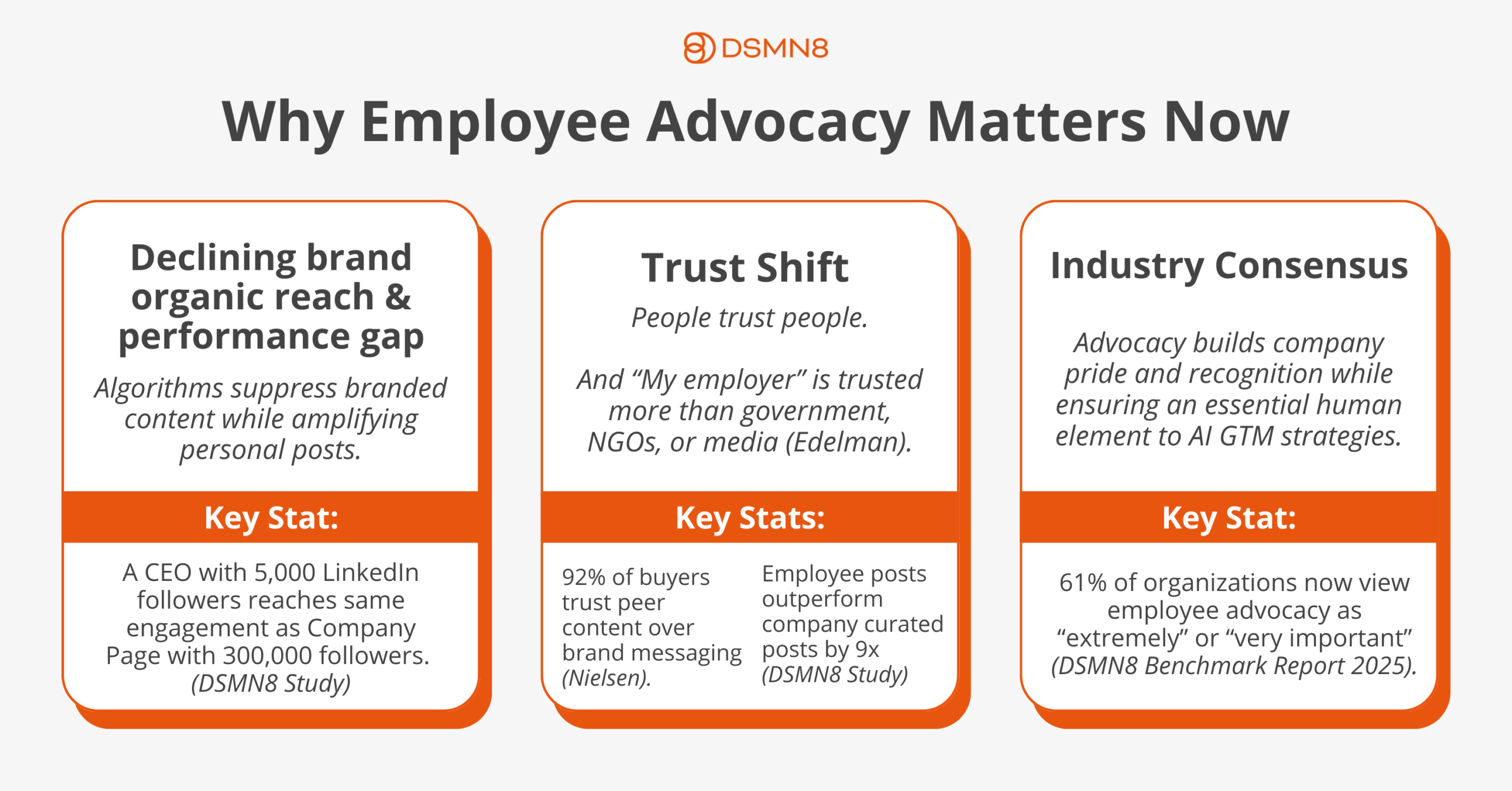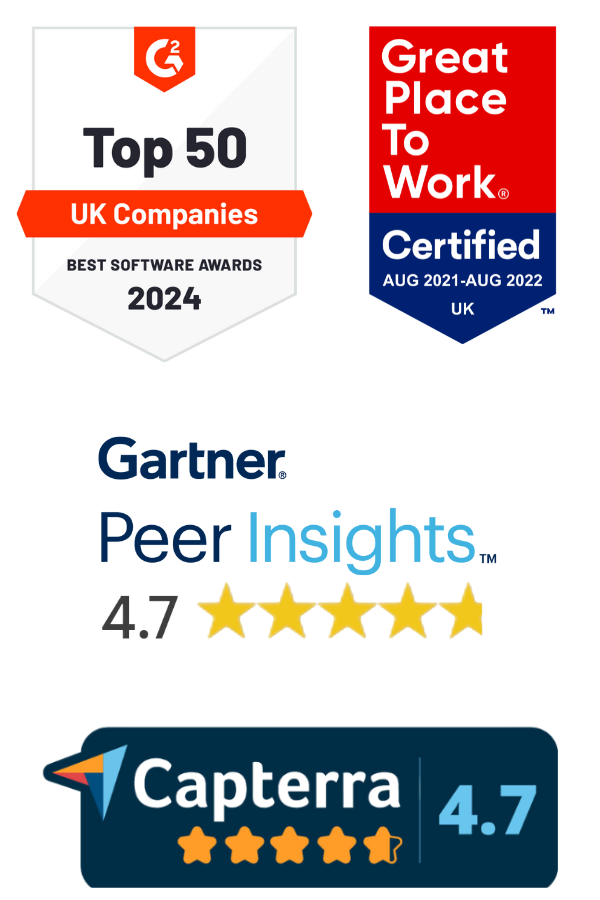
What's on this page:
- The What, Why and How of Employee Advocacy.
- What Employee Advocacy Is.
- Why it Matters Now.
- Culture, Trust, and GTM Efficiency.
- The Impact: What Success Looks Like.
- How Employee Advocacy Works.
- Who’s Doing it Well?
- Anticipating Leadership FAQs.
- Download the PDF One-Pager.
- Final Thoughts & Additional Resources.
Marketers know that employee advocacy works.
You’ve seen the stats, read the case studies, and maybe even piloted a program.
But when it comes to getting leadership buy-in, you need more than enthusiasm. You need a clear, executive-friendly business case.
Execs are busy, risk-aware, and want proof that new initiatives align with business priorities. Long decks won’t cut it, you need a concise, data-backed narrative that says: “This is aligned with our goals. Let’s explore it.”
That’s why we created a one-page executive summary (free PDF download) to help you brief senior stakeholders. In this blog, we’ll share the highlights and show you how to use the one-pager in your own internal pitch.
The What, Why and How of Employee Advocacy
Here’s the simple structure to follow (and what we cover in the PDF one-pager):
What Employee Advocacy Is
Employee advocacy means empowering employees to use their own social media presence (primarily LinkedIn) to amplify your brand and build trust.
Why it Matters Now
- Declining organic reach & performance gap: Algorithms suppress branded content while amplifying personal posts. A CEO with 5,000 followers on LinkedIn reaches the same amount of engagement as a company page with 300,000 followers (DSMN8 study).
- Trust shift: 92% of buyers trust peer content over brand messaging (Nielsen).
- Industry consensus: 61% of organizations now view employee advocacy as “extremely” or “very important” (Employee Advocacy Benchmark Report 2025).
Culture, Trust, and GTM Efficiency
-
Culture & retention: Advocacy builds pride and recognition. 14% of companies list “employee engagement and morale” as a top program objective (Employee Advocacy Benchmark Report 2025).
-
Trust advantage: Edelman’s Trust Barometer shows “my employer” is trusted more than government, NGOs, or media — making employee voices uniquely powerful.
-
AI & GTM efficiency: 81% of companies already use AI for pipeline generation (Salesforce), but advocacy provides the essential human trust layer. Relationships, not just algorithms, are what separate average go-to-market strategies from exceptional ones. (Avnir GTM Blueprint).
Watch the podcast episode with Alex Her, Global Head of Employer Brand, for practical ways to using AI to scale employee advocacy while retaining authenticity and taking a culture-first approach:
The Impact: What Success Looks Like
-
Engagement uplift: Employee posts generate 9x more engagement than corporate content (Study of half a million LinkedIn posts).
-
Expanded reach: General Motors reached 20M+ people in six months via employees (Case Study).
-
ROI / time-to-value: Unit4 achieved 8x ROI, with adoption from 1,200+ employees in 4 months (Case Study).
-
Sample KPI snapshot: cost-per-click under $1 for 23% of programs (Benchmark Report 2025).
How Employee Advocacy Works
- Simple 3-step process: Curate → Share → Track. Provide brand-safe content for employees to share and tailor for different teams to ensure relevancy.
- Employees share via LinkedIn, X, etc., often auto-scheduled. Secure delegate access for executive accounts to reduce time requirement.
- Program admins measure analytics such as clicks, engagement, user adoption, top-performing content, and earned media value. Monitor business results in Google Analytics through UTM tracking.

-91%
Cost Per Click
(clicks from employee shares)
$0.49 vs $5.26 LinkedIn Ads average

4x
LinkedIn Audience Size
(corporate page)
$100,000 saving vs paid ads

+1,900%
Increase in Employees Sharing Content
(vs pre-launch)
from 1% to 20% of total employees
Who's Doing It Well?
- AkzoNobel: $100k in earned media from 272 employees.
- Swiss Post: $424k+ media value, CPC just $1.88.
- Dropbox: made advocacy part of their company culture, ensuring all new hires are onboarded.
Anticipating Leadership FAQs
Naturally, execs will have questions. Your one-pager addresses these common employee advocacy FAQs upfront:

Download the One-Pager
This employee advocacy one-pager is designed to bridge the gap between marketing enthusiasm and exec priorities:
-
Print it and include it in board decks.
-
Email it as a primer before a leadership meeting.
-
Use it to spark alignment across marketing, HR, and comms.
Make sure to get a free Competitor Analysis Review to come prepared with how your company currently stands against your competitors.
Final Thoughts & Additional Resources
Winning executive buy-in for employee advocacy comes down to clarity and confidence.
Leaders don’t need a 40-slide deck: they need a simple, evidence-based case that shows why this matters now, what success looks like, and how it works in practice.
That’s exactly what the one-pager delivers.
Use it as your shortcut to alignment, helping you move the conversation from “what is employee advocacy?” to “when do we launch?”
Here are some more resources you’ll find helpful when pitching employee advocacy to your leadership team:
- Read our piece on the Business Case for Employee Advocacy.
- Check out our ROI Calculator + Reach Calculator for an instant estimation of the results you could see.
- Get a free Competitor Analysis Review to see how your organization currently stands.
- If you’re evaluating employee advocacy software, you’ll find this RFP template and guide helpful:
Emily Neal
SEO and Content Specialist at DSMN8. Emily has 10 years experience blogging, and is a pro at Pinterest Marketing, reaching 1 million monthly views. She’s all about empowering employees to grow their personal brands and become influencers.




